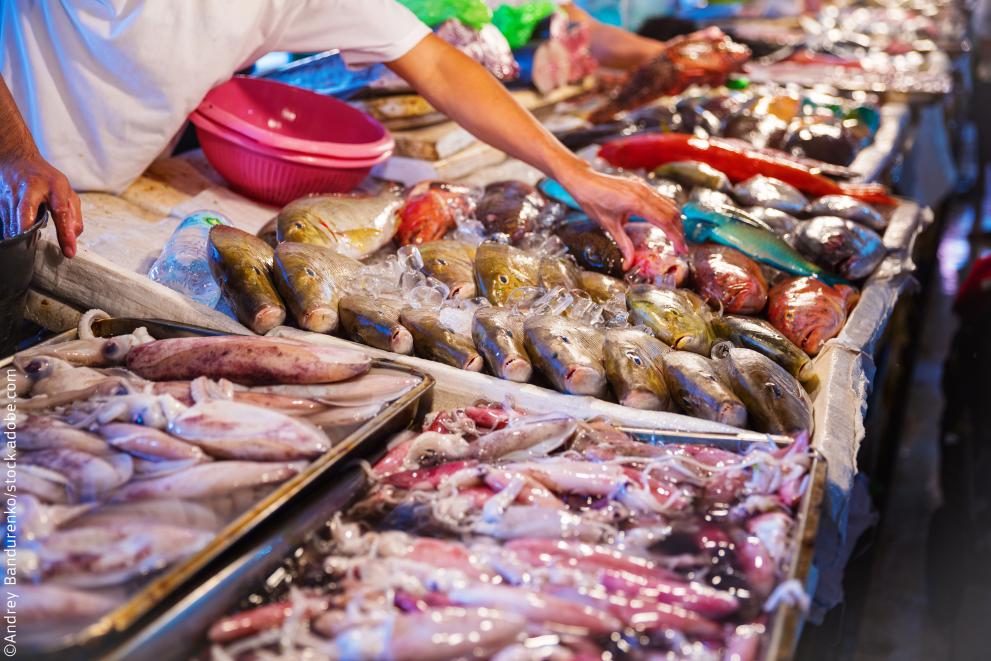
'The EU fish market' is a comprehensive analysis of the EU fisheries and aquaculture industry made by the European Market Observatory for Fisheries and Aquaculture (EUMOFA).
Check out this yearly report to discover more about what is produced/exported/imported, when and where, what is consumed, by whom and what the main trends are.
3 highlights of the 2023 edition
1. Higher prices, less consumption
In 2022, the household spending on fishery and aquaculture products in the EU-27 surged by nearly 11% compared to 2021, accelerating the upward trend that began in 2018.
The escalating inflation had a significant impact on the prices of food, particularly of fish, causing their prices to rise by more than 10% from 2021 to 2022.
Inflation resulted in a significant decrease in at-home fish consumption, which saw volume drop nearly 17% in the highest consuming EU countries from 2021 to 2022, according to Europanel/Kantar/GfK data.
2. Inflation has an impact on EU exports
The value of the EU's exports increased by 19% reaching €8,1 billion. However, its volume continued the downward trend observed in 2021, decreasing by 5% to 2,3 million tonnes.
Several factors influenced EU trade flows in 2022. The main factor was a surge in inflation, partly linked to the COVID-19 recovery which led to an increase in demand and consequent price increases. Further, the Russian aggression in Ukraine had a significant impact, as it increased energy and production costs, contributing to global inflation which affected currency exchange rates.
3. Deterioration of the EU trade balance
As the value of imports grew more than the value of exports, the EU trade deficit was 25%, €4,73 billion higher in 2022 than in 2021.
In the 2013–2022 decade, the deficit grew by 56% in real terms. All EU countries with deficits greater than €1 billion saw a worsened situation from 2021 to 2022. Most EU countries observed value increases in both exports and imports while volumes decreased.
Key dynamics of major species
Salmon: In 2022, imports of salmon in the EU decreased 3% from 2021, but their value increased by 28%, reaching a ten-year high of €8,4 billion. Salmon imports from Norway accounted for 83% of the value increase seen in 2022, with a 33% increase in their average import price compared with 2021.
Shrimps: Accounted for 10% of the volume and 15% of the value of EU imports in 2022, shrimps saw a 2% increase in import volume and 17% increase in import value compared with 2021. In 2022, Ecuador, India and Vietnam increased their market shares by between 1% and 2% in volume and accounted for 89% of the value increase of shrimp imports. Argentina, on the other hand, lost about 3% of its market share from 2021 to 2022.
Cod: One of the most popular species among EU consumers. In 2022, Norway/Russia cod quotas in the Barents Sea were reduced by 20% and supply to the EU market fell by 7%. Average product price for cod increased by 29%, going from 5,05 to 6,53 €/kg, and causing import value to soar by 20% above the 2021 value.
Tuna: In 2022, tuna accounted for 10% of the total volumes and values of fish imported in the EU, with a 1% increase in volume and a 29% increase in value compared with 2021. Skipjack tuna accounted for 53% of the imported volume and 49% of the imported value, followed by yellowfin tuna which accounted for 32% of volume and value.
Alaska pollock: While its import volume remained stable in 2022, its import value soared by 31% to €986 million. The increase in import value is mainly due to a significant increase in prices.
Background
'The EU fish market' is a comprehensive analysis of the EU fisheries and aquaculture industry which has been published every year since 2014.
It is prepared by the European Market Observatory for Fisheries and Aquaculture Products (EUMOFA), a market intelligence service of the European Union developed by the European Commission. EUMOFA works to increase market transparency and efficiency, analyses EU markets dynamics, and supports evidence-based policymaking.
More information
The EU fish market – 2023 report (also available in Spanish, German, French and Italian)
Details
- Publication date
- 23 November 2023
- Author
- Directorate-General for Maritime Affairs and Fisheries
